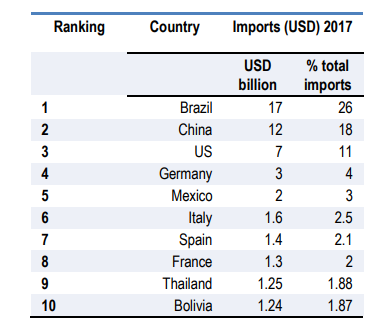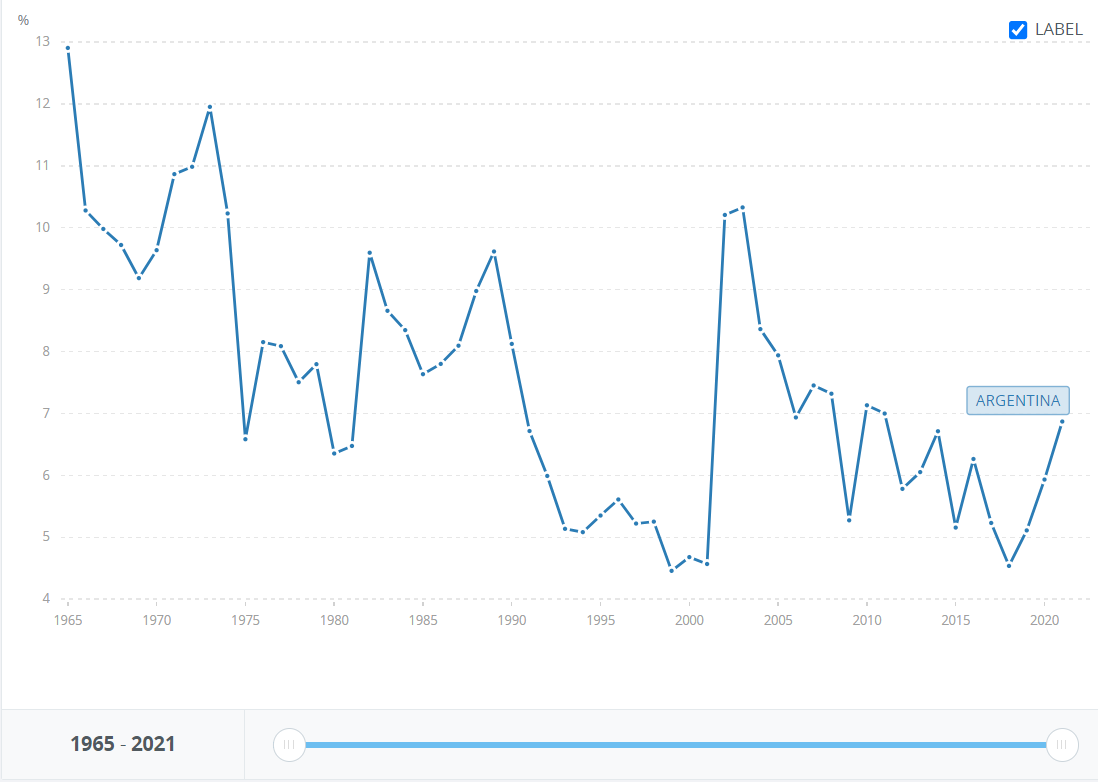Introduction
The time is right for the Archer-Daniels-Midland Company’s entry into a new market. Such a move is inspired by the fact that the disparities in the rate of growth between established and emerging markets have accelerated the rate of globalization. This is driven by the view that companies are prompted to seek capital or markets in different regions of the planet. It is also worth noting that the growing pool of internationally mobile employees who are willing to relocate for new opportunities increases access to a pool of qualified personnel. The pressure on the company to reduce costs as a result of the economic recession prompts the implementation of innovative strategies. There are numerous administrative and operational benefits associated with the relocation of specific business elements to locations with lower tax costs. The introduction of complex compliance systems in G20 economies to avoid the loss of tax revenues across borders has fueled the migration of businesses to other locations. The Archer-Daniels-Midland Company’s entry into Argentina would secure its position as a global leader in an industry facing the effects of a global recession and stringent regulatory forces.
Company Profile: Archer-Daniels-Midland Company
The Archer-Daniels-Midland Company is a global leader in human as well as animal nutrition focused on agricultural origination and processing. The company operates an extensive grain network designed to procure and transport agricultural raw materials such as wheat, corn, oats, and barley as well as products derived from these inputs (United States Securities and Exchange Commission 3). The company’s operations are divided into three key business segments. These are the Services and Oilseeds segment, the Carbohydrate Solutions segment, and the Nutrition division. The company works with farmers through the provision of personalized services and innovative technologies designed to facilitate the development of sustainable practices.
The Ag Services and Oilseeds segment includes global activities associated with the storage and transportation of agricultural raw materials. It is also associated with the crushing and processing of oilseeds such as soybeans, sunflower, canola, and rapeseed into protein meals and vegetable oils (United States Securities and Exchange Commission 4). The carbohydrates solution division is focused on corn and wheat milling and associated activities. The main actions accomplished by this segment are the conversion of corn and wheat into products that are commonly used in the food and beverage industry, such as starches, sweeteners, glucose, dextrose, and flour (United States Securities and Exchange Commission 5). Finally, the nutrition section addresses the needs of a variety of end markets, such as supplements, beverages, and premix for livestock and pet food.
Strategies
The agribusiness sector is extremely competitive, given the importance of commodities in various economies. The markets in which the company operates are run on price, quality, exchange rates, alternative products, and global supply. The commodity-based nature of the institution’s operations necessitates the management of unit costs, the regular assessment of asset portfolios, and the enhancement of efficiency through the implementation of technological solutions. The company spent a total of 160 million dollars in 2020 on research and development (United States Securities and Exchange Commission 8). The company’s expansive technical innovative centers and laboratories allow it to interact with customers globally to provide support and flavors. The prioritization of high-potential new product development projects is intended to bolster the organization’s competitive edge.
Country Profile
Argentina is located on the South American continent, and it is defined by a democratic political system that adopts a free market economic system. The country is a member of the Southern Common Market (Mercosur) trade agreement, which means it has the capacity to avail preferential import tariffs while trading with other Mercosur countries. It is worth noting that foreign entities engaged in business within the nation’s capital are required to register prior to participating in any investment. Domestic and foreign companies receive identical treatment, and access to all economic sectors is provided non-preferentially. The government offers tax incentives to specific industries such as mining, personnel training, biotechnology, electricity production, and software. In addition, there is a tax-free zone in Tierra del Fuego where special incentives are provided for specific activities.
Argentina’s profile demonstrates its suitability for expanded international businesses. It is Latin America’s third-largest economy and has been classified as an upper middle-income economy by the World Bank since 2019 (The Organization for Economic Cooperation and Development 4). The country has a strong middle class and a highly educated population, with estimates indicating that the nation had a 99% literacy rate in 2017 (The Organization for Economic Cooperation and Development 4). It should be noted, however, that the nation has a declining labor force participation, which tends to aggravate the nation’s inequality. The nation is open to foreign direct investment as a result of government policies designed to increase economic liberalization and privatization. The country is currently open and is ranked below the OECD average and most of its neighbors in terms of statutory restrictions based on findings from the OECD FDI Regulatory Restrictiveness Index of 2018 (The Organization for Economic Cooperation and Development 6). As a result, the nation has become an attractive base for foreign investment as demonstrated in the export and import indices in table 2 and 3.
Argentina’s attractiveness to the international market is demonstrated by the number of foreign companies that have invested in the country. For instance, it is estimated that 77% of the country’s investments originated from foreign countries, with the U.S. and Spain accounting for 39% of the companies as demonstrated in table 1 (The Organization for Economic Cooperation and Development 6). It is worth noting that Argentina’s engagement in Global Value Chains (GVCs) occurs primarily in the form of forward linkages in value-added trade. Trade currently represents 26% of GDP, with manufacturing accounting for a quarter of the nation’s trade (The Organization for Economic Cooperation and Development 7). The country provides suitable conditions for the support of international businesses.
Table 1: Inward Direct Investments 2017

Table 2: Top Export Partners

Table 3: Top Import Partners

The Agricultural Sector
Argentina features a robust agricultural sector that significantly impacts the region’s trade. The sector accounts for 6% of the nation’s GDP and 48% of its exports, according to the World Bank (see fig. 1) (The Organization for Economic Cooperation and Development 13). It is worth pointing out that the use of technology and mechanization in Argentina’s farming industry and the Pampas prairies, in particular, makes it ideal for foreign investment. Industrial scale expansion is commonplace in the region, and the agro-food, and agro-industrial sector employs between 18 and 35% of the nation’s labor force (The Organization for Economic Cooperation and Development 13). The export of soybean products has facilitated the sector’s growth and increased trade with regional and international partners. It is worth noting that the government has implemented measures such as integrated agricultural methods, crop rotation, zero-till farming, and peri-horticultural urban farming in a bid to address adverse social and environmental impacts.
The abundance of measures intended to promote responsible business conduct within the business sector makes Argentina a suitable avenue for business expansion. For instance, the Argentine Business Council for Sustainable Development has championed the “Vision Agro Sustentable 2050” project intended to facilitate the promotion of sustainable agriculture ecosystems as well as food security (The Organization for Economic Cooperation and Development 14). In addition, the increasing number of Agri-tech startups that are focused on the optimization of productivity through the mitigation of adverse environmental effects in the sector. The result is an attractive business environment that has the infrastructure and raw materials to support an agricultural business.

There are numerous competitive advantages that can be gained by expanding into new markets. For instance, the reduction of costs allows the company to compete favorably with its rivals. It is also worth considering the fact that governments such as Argentina are altering their tax regimes to facilitate the entry of foreign entities and encourage the creation of employment opportunities. Argentina provides a conducive business environment, has favorable government incentives, and is defined by its ease of inward investment, making it the most suitable destination to establish a flourishing agricultural business.
Conclusion
The Archer-Daniels-Midland Company is poised for entry into a new market. The accelerated rate of globalization, coupled with the desire to seek capital in different regions of the planet necessitates the implementation of innovative strategies. In addition, the availability of a pool of internationally mobile employees, the pressure on the company to reduce costs, and complex compliance systems in G20 economies force companies to seek new and favorable markets. Argentina provides a suitable location in view of the fact that it provides a suitable business environment and has a robust agricultural sector that has the capacity to address the company’s needs. A move to the South American country would guarantee increased access to the raw materials and market required to maintain Archer-Daniels-Midland Company’s competitive edge in the global food and beverage industry.
Works Cited
Responsible Business Conduct Country Fact Sheet: Argentina. The Organization for Economic Cooperation and Development. Web.
The World Bank. Agriculture, Forestry, and Fishing, Value Added (% of GDP) – Argentina. Web.
United States Securities and Exchange Commission. Archer-Daniels-Midland Company: Annual Report Pursuant to Section 13 or 15 (d) of The Securities Exchange Act of 1934 for the Fiscal Year Ended December 31, 2020. 2021. Web.